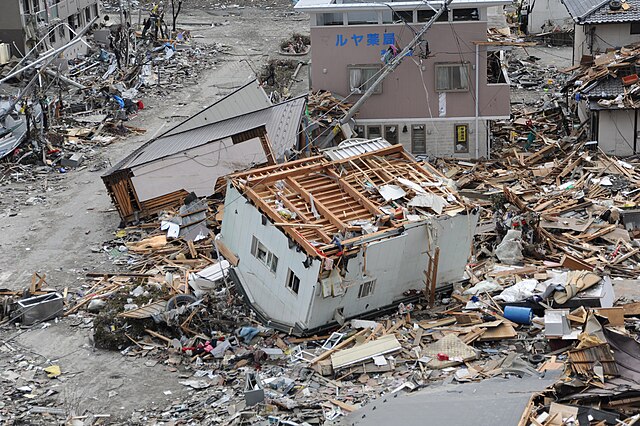Summary | Excerpt | Reviews | Beyond the Book | Read-Alikes | Genres & Themes | Author Bio

This article relates to One Hour of Fervor
 In Muriel Barbery's novel One Hour of Fervor, her characters watch the television in horror as news breaks of a huge earthquake in Japan's Tohoku region and its resulting tsunami. Though they are safely on high ground far from the impacted area, they are immediately fearful for loved ones, and reminded all too starkly of just how quickly life can come to an end.
In Muriel Barbery's novel One Hour of Fervor, her characters watch the television in horror as news breaks of a huge earthquake in Japan's Tohoku region and its resulting tsunami. Though they are safely on high ground far from the impacted area, they are immediately fearful for loved ones, and reminded all too starkly of just how quickly life can come to an end.
The disaster appearing in Barbery's novel is based on a real one, adding to the poignancy of the scenes described. On March 11, 2011, a magnitude 9.1 earthquake struck beneath the ocean around 70 kilometers (43 miles) from the Tohoku region on the island of Honshu. The earthquake was the most powerful ever recorded in Japan, and the fourth largest worldwide since records began. Worse still, an offshore earthquake can trigger a tsunami – a series of large waves caused by a mass displacement of water – and the one that followed this particular earthquake devastated lives and land.
The walls of water sent hurtling towards Tohoku reached top heights of about 40 meters (131 feet) above sea level. They swept over seawalls (including the world's largest and deepest at the time) and ran ruin through coastal towns and cities. According to the Japan Reconstruction Agency, nearly 400,000 buildings were destroyed, with a further 750,000 significantly damaged. As of 2021, at least 19,747 deaths have been confirmed, while approximately 2,500 people remain missing, presumed dead.
Adding to the panic, the tsunami also damaged vital emergency generators at the Fukushima Daiichi Nuclear Power Plant, triggering a meltdown. So serious was the incident, it is only the second nuclear event to be classified as level seven by the International Atomic Energy Agency – the other being the 1986 Chernobyl disaster. With radiation leaking from the plant, an exclusion zone was put in place, forcing 150,000 people to evacuate their homes. Japan has already spent trillions of yen on decontamination alone, but it is estimated that the total recovery time will be 40 years. Many former residents still refuse to return as of 2023, due to fear of radiation poisoning.
The Japanese government estimates financial damage from the earthquake and tsunami to have totaled around 16.9 trillion yen (or $199 billion). The World Bank, meanwhile, calculates the total cost could be as great as $235 billion, recognizing the natural disaster as the world's costliest in history.
If one positive outcome has emerged from the event, it is Japan's determination to learn from it and fortify tsunami defenses, mitigating the risk of tragedy striking on such a scale again. Vast quantities of soil and rock were brought in to raise the level of the land by 10 meters (33 feet) before the construction of any new buildings. More than 430 kilometers (265 miles) of new and improved seawalls have been built along the Tohoku coastline. Some of these walls reach heights of 12.5 meters (41 feet). Data collected from the tsunami has also contributed to improvements in building codes and warning systems that can help protect people across the globe from future disasters.
Damage caused by Tohoku earthquake and tsunami in Ofunato, Japan
U.S. Navy photo by Matthew M. Bradley
Filed under People, Eras & Events
![]() This article relates to One Hour of Fervor.
It first ran in the February 21, 2024
issue of BookBrowse Recommends.
This article relates to One Hour of Fervor.
It first ran in the February 21, 2024
issue of BookBrowse Recommends.
Your guide toexceptional books
BookBrowse seeks out and recommends the best in contemporary fiction and nonfiction—books that not only engage and entertain but also deepen our understanding of ourselves and the world around us.